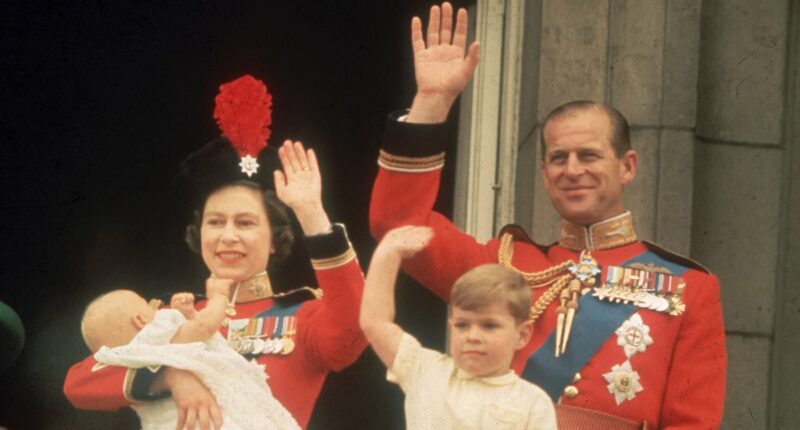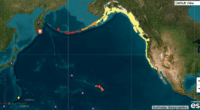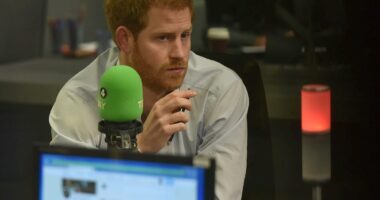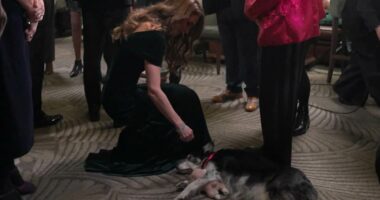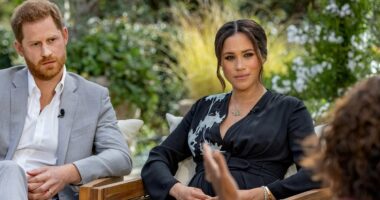Share this @internewscast.com
Many women who’ve experienced childbirth often claim it’s the most painful event of their lives. It’s no wonder, then, that Queen Elizabeth II chose to avoid this ordeal as much as possible.
The late Queen was put into a ‘twilight sleep’ when giving birth to Charles in 1948, Anne in 1950 and Andrew in 1960.
Twilight sleep, also known as dammerschlaf, was first developed in Germany by obstetricians Bernhardt Kronig and Karl Gauss in 1906.
By using a mix of the drugs scopolamine and morphine, mothers were placed in an amnesiac state before delivery, waking up with no memory of the birth itself, which was typically conducted using forceps.
Queen Elizabeth’s decision to use this extreme form of pain relief would have been viewed as ‘radical’ at the time.
According to Milli Hill, the author of the popular pregnancy guide The Positive Birth Book, a German clinic became quickly known for offering these “pain-free” births, as shared with the Daily Mail.
‘Women began advocating for twilight sleep as part of their newfound autonomy,’ Hill explained, ‘prompting the method to gain popularity across the USA, UK, and Europe, with even Queen Elizabeth II opting for this approach during the births of her first three children.’
But there is a long list of sinister reasons as to why twilight sleep has been resigned to history.

Charles was born in Buckingham Palace on November 14, 1948 weighing 7lbs 6oz

Prince Philip holds Charles in the grounds of Windlesham Moor in 1949

Princess Elizabeth, who would later ascend to the throne, used twilight sleep during the birth of Prince Charles. Historical accounts suggest she was in labor for approximately 30 hours until the child was delivered via C-section.
Due to the heavy sedation, mothers often had no memory of giving birth to the point where they did not immediately recognize their own newborns.
Some mothers struggled to bond with their children as a result of the procedure, while others refused to accept they had given birth at all.
Milli explained: ‘Taken up as a way for women to gain more control in childbirth, the reality seemed very far away from this.
‘Women were placed in padded, crib-like beds, blindfolded, with cotton wool in their ears and their arms tied down or even straight-jacketed.
‘Conscious, but entirely unaware of their own actions, the women under twilight sleep would thrash around and scream at full volume, often waking with feelings of disassociation and friction burns to their arms from fighting their restraint.
‘This, along with side effects such as horrifying flashbacks, increased birth complications and even death. This caused the method to decline in popularity, but the use of scopolamine and the whole concept of “knock ’em out, drag ’em out” obstetrics pervaded for 60 or more years of the 20th century.’
While it is not clear exactly what happened to Queen Elizabeth II when she used twilight sleep to give birth to Andrew in 1960, a lady-in-waiting told royal biographer Gyles Brandreth that she suffered ‘post-natal side effects’.
And it is no coincidence that Prince Edward was born naturally four years later.

Princess Anne, pictured alongside her parents and brother Charles, was born at Clarence House on August 15, 1950 weighing exactly 6lbs

Prince Andrew, seen with his siblings and devoted parents at Balmoral Castle, was born at Buckingham Palace on February 19, 1960 weighing 7lbs 3oz

Prince Charles admires his baby brother Andrew. He would be the last of the Queen’s children to be born using twilight sleep
By the late 20th century, twilight sleep had been phased out, as doctors became increasingly aware of its risks.
The late Queen knew her fourth child would be her last, so she made the decision to be awake for the delivery.
But this was not the only change Elizabeth insisted upon for her final birth.
Inspired by women’s magazines of the time, she wanted Philip to be involved in the labour.
Instead of attending the birth of his first three children, Philip had opted to play polo, challenge his private secretary to a round of squash and swim in the Buckingham Palace pool.
Writing in her book My Husband And I: The Inside Story Of 70 Years Of Royal Marriage, royal expert Ingrid Seward said: ‘The Queen, by then aged 37, had asked him to be there; she’d been keenly reading women’s magazines that stressed the importance of involving fathers in childbirth and had become fascinated by the idea.
‘Thus Philip became the first royal father in modern history to witness the arrival of one of his children.’
The Duke of Edinburgh held his wife’s hand as she gave birth to Prince Edward in the Belgian Suite of Buckingham Palace in 1964.

Prince Edward was born on March 10, 1964, and was the lightest baby out of his siblings, weighing just 5lbs 7oz

The Queen and Prince Philip on the balcony of Buckingham Palace with a baby Prince Edward and Prince Andrew during Trooping the Colour
Notably, the late Queen’s children, Charles, Anne, Andrew and Edward, were among the last generation of royals to be born at home.
Upon his birth at the Lindo Wing in London’s St Mary’s in 1982, Prince William became the first direct heir to the throne to be born in a hospital, rather than Buckingham Palace.
Years later, his wife Catherine would give birth to their children George, Charlotte and Louis in the same private wing.
Much like Charles and Diana, William and Catherine faced a mass photo call outside St Mary’s each time they welcomed a child into the world.
The Duke and Duchess of Sussex, by contrast, announced that they wanted to keep details surrounding the birth of their first child private, as Meghan is said to have considered the idea of posing for pictures and greeting well-wishers straight after the birth to be archaic.
It is believed that the American actress initially wanted a home birth. Both she and Harry had studied hypnobirthing techniques and were hopeful of having an all-female, midwife-led delivery in the privacy of Frogmore Cottage on the Windsor estate.
But after she reached her due date, a home birth began to look increasingly unlikely.

Prince William was born at the Lindo Wing in London’s St Mary’s Hospital on June 21, 1982

Princess Diana and Prince Charles had to face a mass photocall at the private hospital hours after she had given birth

Prince George was born at the Lindo Wing in London’s St Mary’s Hospital on July 22, 2013

William and Catherine talk to the press gathered outside the hospital


Princess Charlotte (left) was born on May 2, 2015, and Prince Louis (right) was born on April 23, 2018 – both at the Lindo Wing in London’s St Mary’s Hospital
Indeed, experts had long warned that as a first-time mother and one who, at 37, had experienced what was classed, in medical terms, as a ‘geriatric pregnancy’, there would be a strong chance that the Duchess would require some sort of medical intervention.
More than a week overdue, Meghan was eventually taken to The Portland Hospital in London, where she gave birth to Archie on May 6, 2019.
Standing outside the stables at Windsor, Harry reassured the public that both mother and baby were ‘doing incredibly well’, calling it ‘the most amazing experience’.
In his bombshell memoir Spare, Harry went into more detail about the birth experience, confirming that Meghan was induced in a private room.
According to Harry, his wife settled into a bath and immersed herself in the calming sounds of Deva Premal’s Sanskrit mantras, which had been remixed into hymns.
Meanwhile, the Duke’s job was to set the ambience by arranging electric candles – the same ones he had used during his proposal to Meghan – around the room.
Among the items in her overnight bag was a framed photograph of Harry’s late mother, Princess Diana, which he propped up on a small table. He noted in his memoir that this touching tribute was Meghan’s idea.

Prince Harry and Meghan Markle’s oldest child Archie was born at The Portland Hospital in London on May 6, 2019
But, despite the ambience, Meghan’s efforts to breathe through the discomfort became overwhelming and she ultimately had to receive two epidurals.
‘The anaesthetist hurried in. Off went the music, on went the lights,’ Harry wrote.
There was a brief moment of concern when the umbilical cord was discovered to be wrapped around the baby during delivery but, soon after, their healthy son Archie was born.
‘A nurse swept the baby into a towel and placed him on Meg’s chest and we both cried to see him, meet him,’ the Duke wrote.
‘Our ayurvedic doctor had advised us that, in the first minute of life, a baby absorbs everything said to them. So whisper to the baby, tell the baby your wish for him, your love. Tell.
‘We told.’
It is safe to say Harry and Meghan’s childbirth experience was a far cry from Queen Elizabeth’s.
